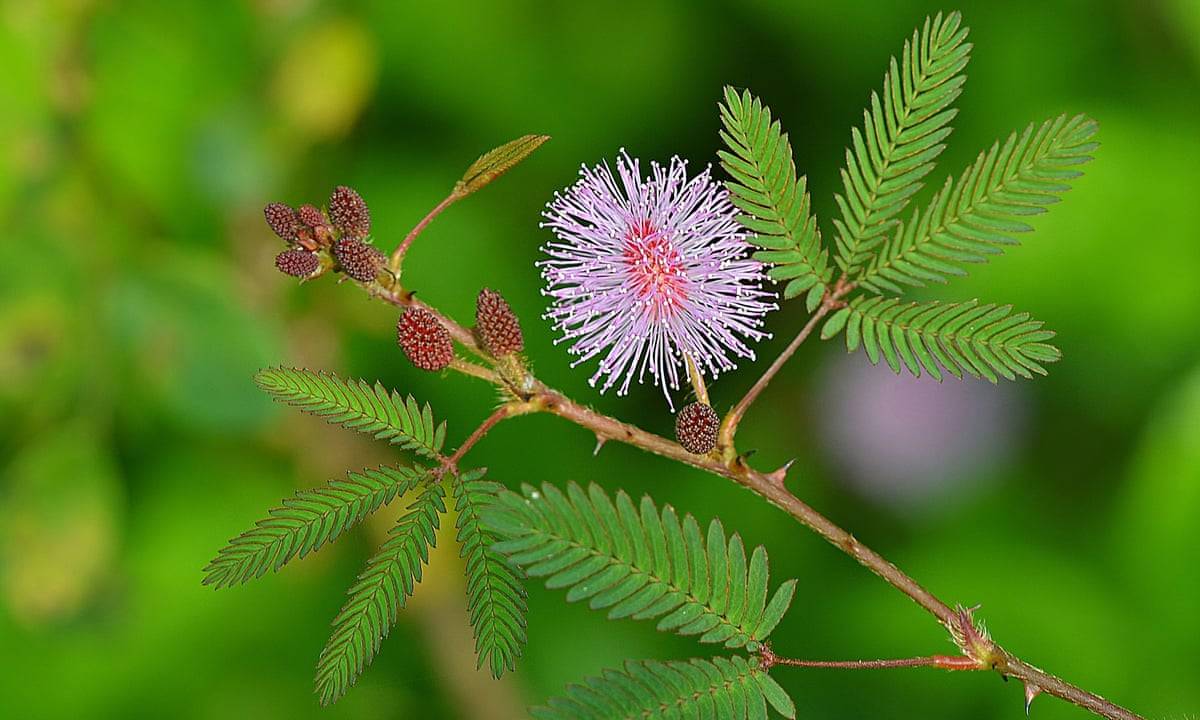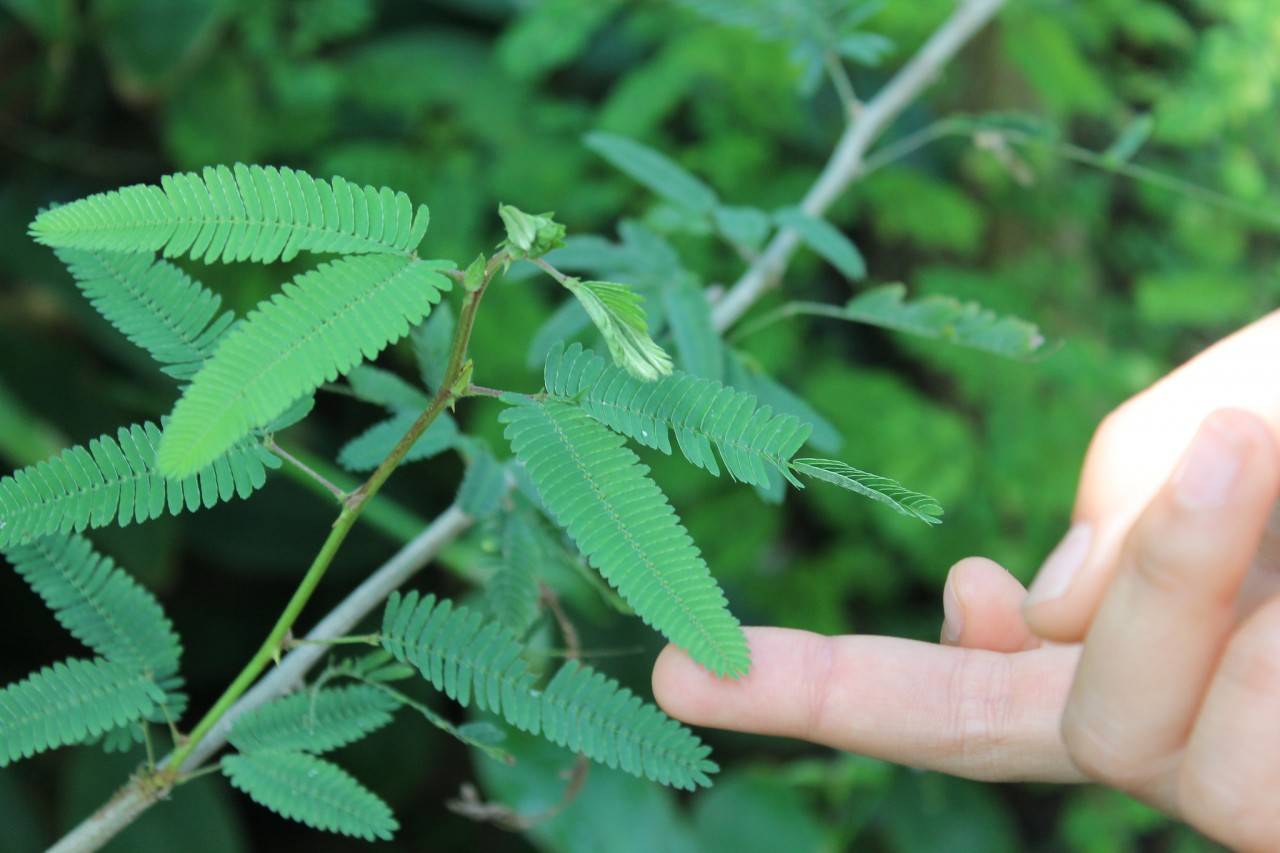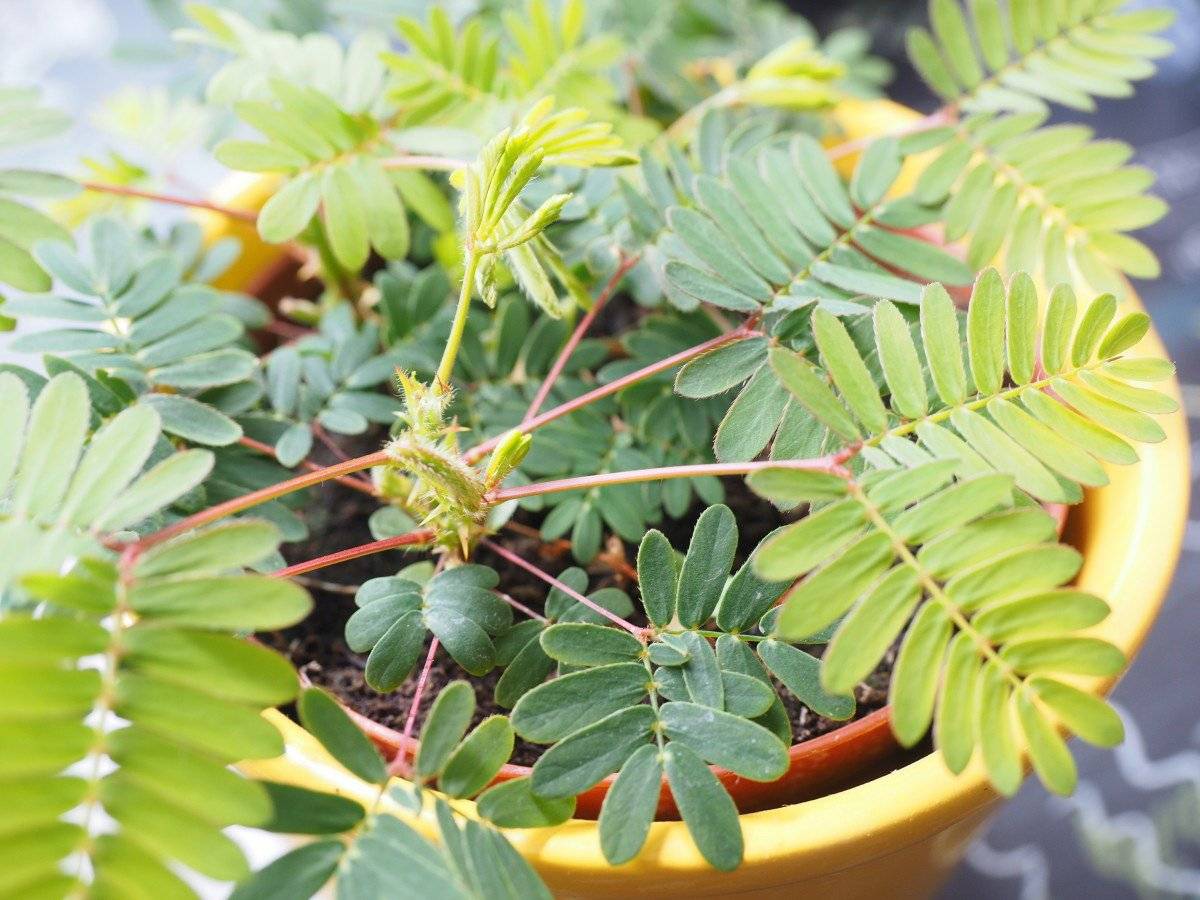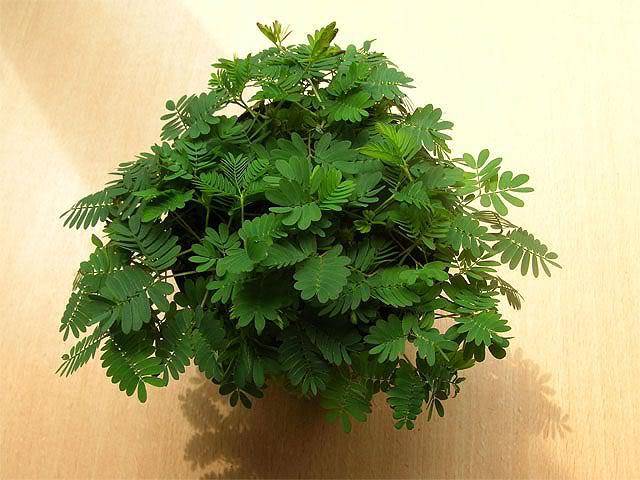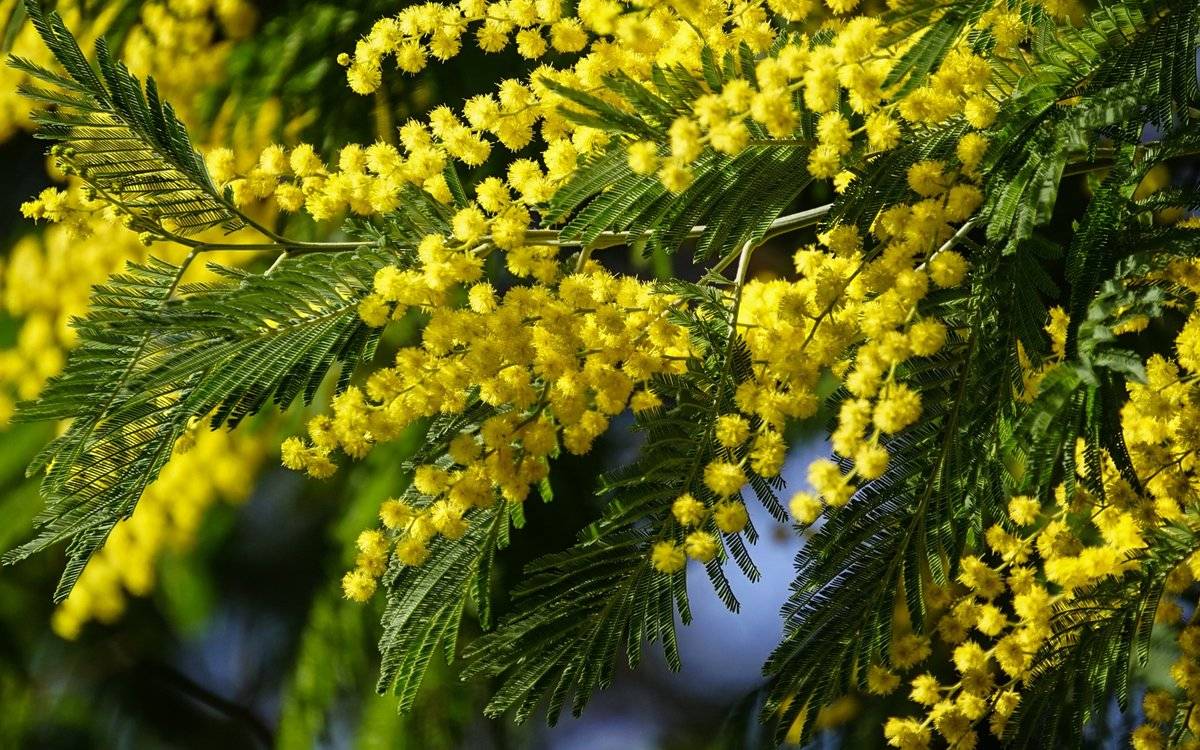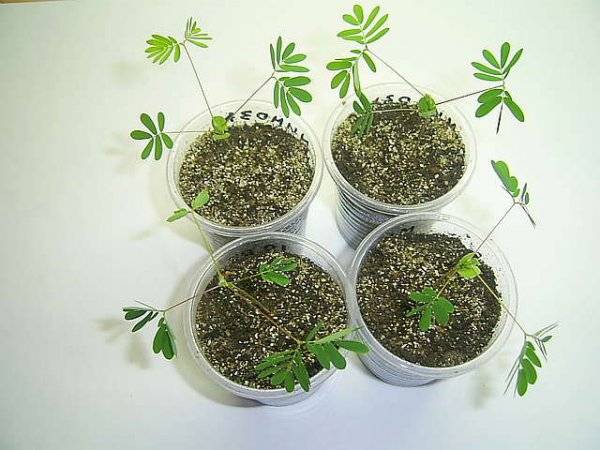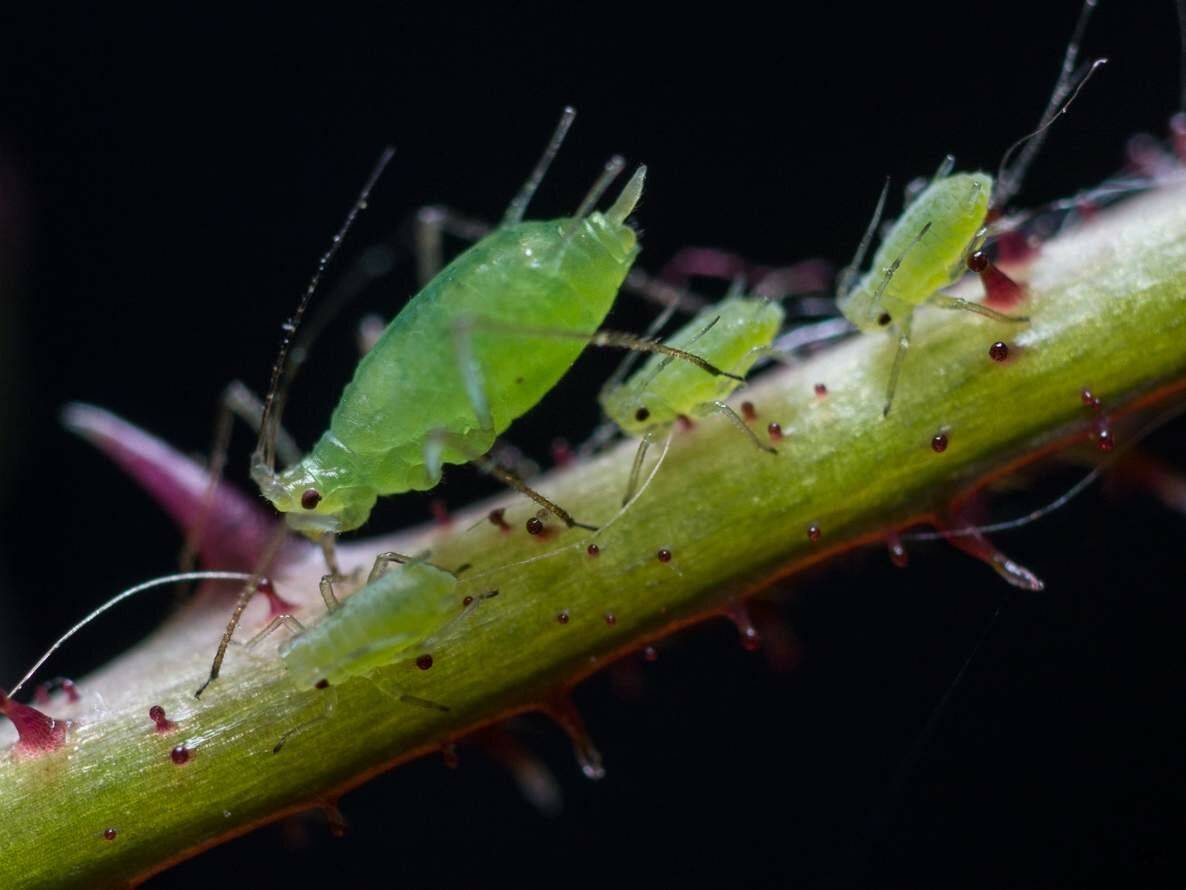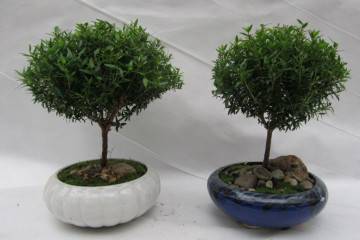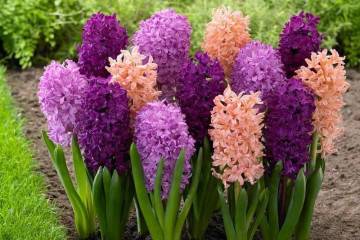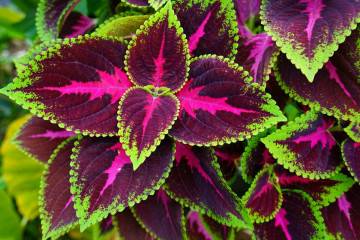Shy mimosa - what a plant, everything about her
Content:
The exotic houseplant mimosa is touchy, or bashful (lat.Mimosa Pudica) sensitively reacts to conditions of maintenance and care. That is why it is popular mainly with avid florists. However, even a novice flower lover can grow a whimsical beauty, subject to the recommendations of experts.
Mimosa bashful - what is this flower
Delicate flower brought to Europe from tropical regions of Latin America is a perennial herb from the genus Mimosa of the legume family. The impossibility of growing shy mimosa in natural conditions in mid-latitudes made it a popular flower for the home or greenhouse.
In conditions of home keeping, a flowering shy grows no more than 50-60 cm in height. In nature, this dwarf shrub grows 2-2.5 times taller. The straight trunk with small thorns makes it look like a miniature tree. All parts of the plant are covered with a delicate hairline.
Long cuttings of branches are decorated with groups of small bipinnate sensitive leaves, because of which the plant itself is called bashful mimosa. Sensitive foliage reacts to light, darkness, movement of air currents and the slightest touch. Small pink-lilac spherical flowers eventually turn into pods, each of which can hold 8-10 seeds.
Due to the peculiarities of care, the plant is considered to be capricious. Neglect of the rules of maintenance can lead to the death of the plant in the cold season. And then, to make up for the loss, growers have to grow a new plant from seeds.
Growing bashful mimosa from seeds at home
Despite the fact that mimosa, called touchy, is a perennial plant, at home it is most often grown as an annual. This is due to the fact that some novice flower lovers cannot provide proper care and satisfactory living conditions.
For mimosa, shy and destructive can be:
- low temperature conditions;
- the presence of drafts;
- lack of sunlight or artificial lighting;
- excess moisture in the soil;
- low air humidity, heat.
How to care for a touchy one at home
Caring for bashful mimosa at home will not require much effort if the requirements for temperature and light conditions are met. In addition, the plant is sensitive to watering, spraying and fertilizing with mineral fertilizers.
Illumination and temperature conditions
In order for the plant to feel comfortable, bloom for a long time and abundantly, it needs good lighting. It is best to place a flowerpot on the windowsills on the south side of the house.
In winter, in the absence of sufficient light, shy mimosa will need additional lighting. Artificial lighting should provide the plant with at least 10-12 hours of daylight.
In addition, the cultivation of a tropical plant requires strict adherence to the temperature regime. The ideal air temperature for a normal growing season of the seedling ranges from 20-24 ° C.
During the cold season, when the plant is dormant, the optimum ambient temperature should be between 16-18 ° C. Changes or a sharp drop in temperature will negatively affect the health of the indoor flower.
Failure to comply with the temperature and light conditions in the winter leads to the fact that in the spring an exotic flower will look unattractive. The stems, weakened from lack of light and heat, will be too elongated, and their color will become pale green.
Watering rules and humidity
Accustomed to the tropical humidity, pink mimosa at home requires abundant watering. This is especially true for the hot season. In the summer heat, when the air temperature exceeds 24-26 ° C, it is necessary to periodically spray the seedling. Lack of moisture and low humidity can affect the beauty of the plant: its foliage will turn yellow or begin to fall off intensively.
In winter, the plant does not require frequent watering, as it is dormant. A drop in air temperature and excessive moisture in the soil can cause irreparable harm. The root system will start to rot and the seedling will eventually disappear.
Top dressing and soil quality
In order for a bashful plant to acquire the necessary decorativeness, it needs fertile soil, which can be purchased at a specialized store. It is also possible to prepare the soil with your own hands. To do this, it is enough to mix in equal proportions:
- peat;
- chopped tree bark;
- washed quartz sand;
- perlite.
In addition to the fact that the bottom of the flower pot must have a hole, it must be lined with a small layer of charcoal or expanded clay. This will provide good drainage and protect the root system from excess moisture that causes rotting and fungal diseases.
In order to maintain the soil in an ideal condition for touch-me-nots, it is necessary to systematically apply organic and mineral fertilizers during the growing season and active growth.The frequency of feeding should be at least 2 times a month using the dosage indicated on the preparation.
The optimal period for applying top dressing is from early spring to mid-autumn. After the plant has bloomed and passed into a dormant state, the use of fertilizers should be stopped.
Flower container size
For normal vegetation and crown development, mimosa does not need a large flowerpot. This is due to the fact that the plant has a not too developed root system. Planting in a larger container is carried out only in the case of planting young seedlings in a permanent place.
Pruning and replanting
Deviations from the rules of agricultural technology and unsatisfactory conditions of detention can lead to the fact that the capricious sissy quickly loses its decorative appearance:
- foliage will turn pale green;
- the trunk will be strongly extended;
- leaves turn yellow or fall off;
- the plant will not bloom or stop blooming.
To remedy this situation, flower lovers apply intense pruning or pinching. In this way, a beautiful crown is formed.
In exceptional cases, when the plant has overwintered satisfactorily, it can be transplanted into another container. This process is carried out exclusively by the transshipment method so as not to damage the roots. To do this, the earthen lump in the flower pot must be slightly dried so that it does not fall apart during the transplanting process.
Features of flowering plants
Growing indoor mimosa is not as difficult as achieving abundant flowering. The plant reacts sensitively to the slightest maintenance and care conditions. Therefore, it requires attention and care not only during the formation of flower buds, but throughout the year.
A period of activity and rest
The active phase of plant development and growth is limited to the interval between mid-spring and late autumn. During this period, the bashful beauty requires abundant watering, spraying and systematic fertilizing.
During the dormant period, the plant should be watered only as the top soil in the pot dries up. Reduced room humidity can be compensated for with a cup of water placed next to the flower pot. Any kind of top dressing in the winter is categorically excluded.
Types and shape of flowers
Botanists have studied and described more than 600 species of mimosa. The most common in the European part of the continent are 3 types:
- mimosa bashful. Its pink-lilac flowers are collected in a kind of ball and consist of four parts;
- rough (lat.Mimosa Scabrella). Flowers are collected in lush panicles of bright yellow color;
- lazy (lat.Mimosa Pigra). Globular inflorescences are white.
Most of the species known to science are perennial shrubs and are widely used for ornamental planting.
Flower reproduction methods
The high demand for light, heat and moisture leads to the fact that not every exotic lover will agree to take care of such a fastidious exotic all year round. It is much easier to grow a new seedling with the onset of spring. That is why bashful mimosa is most often used in room conditions as an annual.
Propagation by cuttings
Trying to decorate their home with an exotic sissy, some growers are trying to propagate it by cuttings. To do this, a cut of a branch with a length of at least 20 cm must be kept for 2-3 hours in a solution of root root or potassium humate.
The stalk prepared in this way is planted in moist, loose soil.
Seed propagation
In order for an unusual flower to forever settle in the collection of house plants, avid florists try to plant it with seeds every spring.This breeding method is considered the most effective because it gives good results.
It is enough to plant a seed in a moistened substance in early or mid-March and cover it with a small layer of earth. The planting container should be covered with polyethylene or a piece of glass, placing it in a warm place. The first shoots will appear in 2-3 weeks.
Growing problems, diseases and pests
Mimosa, accustomed to a tropical climate, requires special conditions of maintenance and careful care. The key threat that prevents indoor pets from growing and delighting with a healthy look is harmful insects. These small, sometimes barely noticeable pests can cause irreparable damage to a home flower.
How to deal with them
The defeat of indoor plants by harmful insects most often occurs due to improper care of them. Usually they start up in cases of violation of thermal, light and water regimes. Lack of light and overly moist soil is an excellent breeding ground for them.
In pest control, insecticides such as phytosporin or actara are used. The same means can be used as a prophylaxis if pests appeared earlier on a plant adjacent to mimosa. To prevent this trouble, you should periodically inspect the crown of home flowers.
Beautiful and capricious touch-ups that require increased attention can decorate any home, office or greenhouse. To do this, you should carefully follow the step-by-step recommendations of specialists. The gratitude of a well-groomed plant will be expressed in an attractive appearance and abundant flowering.
